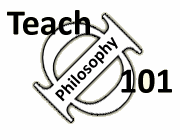Teach Philosophy 101
Free resources for
philosophy teachers!
"One of the most comprehensive, well-researched, and accessible guides for teachers that I have ever seen." James Lang, Chronicle of Higher Education (read full review of TΦ101)
Students with Asperger's Disorder
The Viennese pediatrician, Hans Asperger, first studied and wrote about this disorder in 1944. By 1994 Asperger's disorder had founded its way into the American Psychiatric Associations famed "DSM-V." Lynn Burke's notes give a detailed description of the diagnostic criteria, but the general idea is that these students often have some combination of these factors:
-
difficulty interacting with peers;
-
difficulty interpreting social cues;
-
narrow interests to the exclusion of other activities;
-
compulsive routines;
-
and language pecurliarities such as formal and pedantic language.
Usually they have average to above average intelligence. Often they have other issues such as learning disabilities, low self esteem, depression, and anxiety. And for reasons no one understands, there appear to be many more students who suffer from Asperger's coming through the K-12 system and headed for your classroom.
Not surprisingly, college can be a stressful time for students with Asperger's. We all know how overwhelming college can be for any student, but imagine the situation for a student with this disorder, overwhelmed by new rituals, unstructured time, confusing sounds and smells, and often living in close contact with other students. Often these students don't get slang, sarcasm, banter, and a need to filter.
What faculty members can do to assist student with this disorder:
-
Making expectations clear is important for many student, especially for those with Aspergers. These students often need to be told exactly what to do, rather than receiving general instructions.
-
Provide plenty of advance notice for changes in the schedule.
-
Understand that these students may have more problem with distractions such as noises. Students may need to sit in the front of the room.
-
Students with this disorder may have particular problems with group projects and presentations. Consider alternative methods for these students to satisfy the requirements.
For more information, including additional sources, see the detailed notes by Lynn Burke.
Author: John Immerwahr
Update: May 17, 2011
